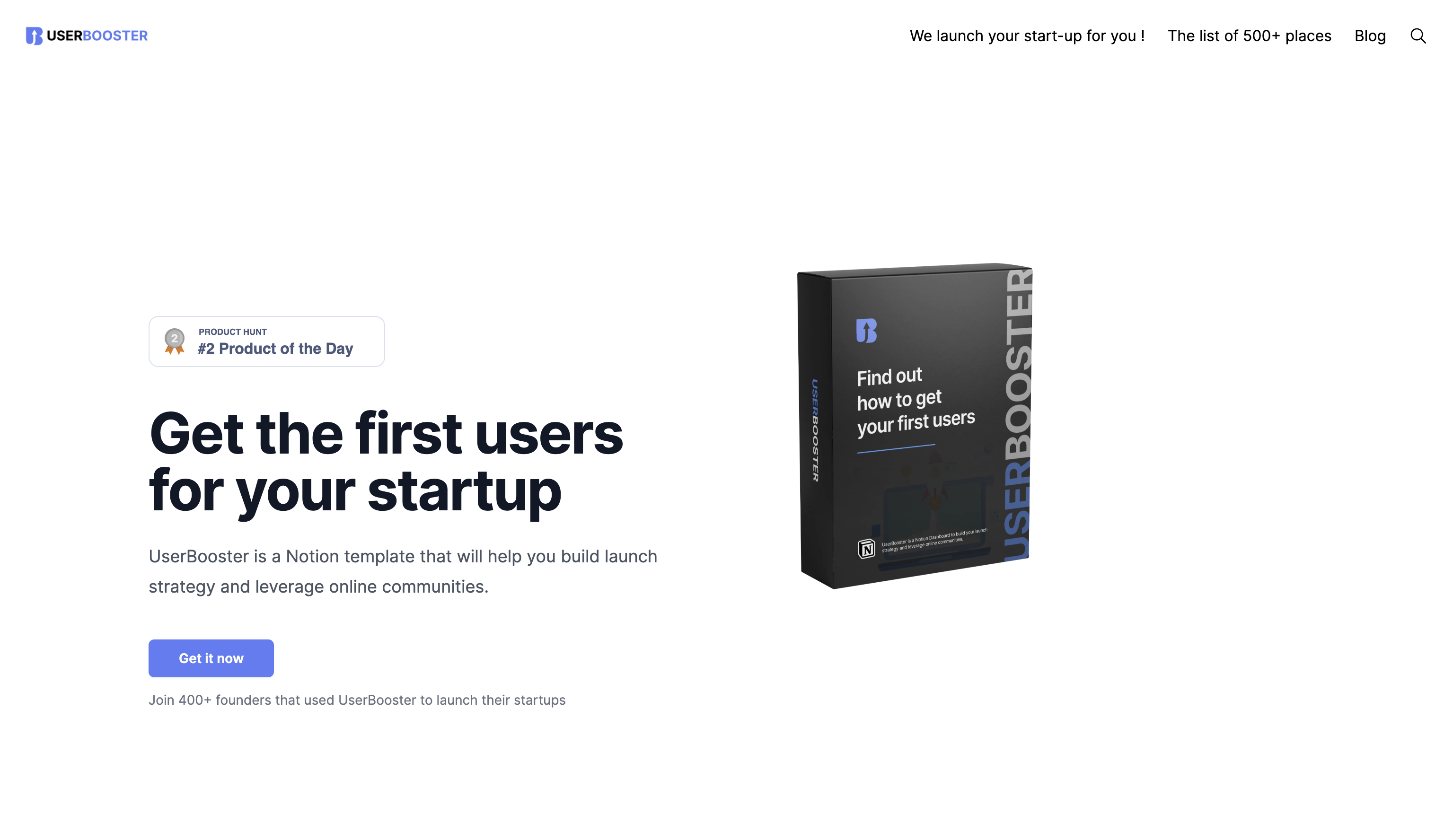Linkedin Marketing for Startups
Posted on May 19, 2022 (Last modified on February 27, 2024 )
6 minutes • 1105 words
Table of contents
Why should I use LinkedIn for my startup?
LinkedIn has a bad reputation.
Most people see it as a combination of an online resume and a FaceBook wall. The content here is very quality, that’s true. People want good content. If your produce some, they will share it. A lot! That’s precisely why you should start to do marketing on LinkedIn.
The good news is that LinkedIn is one of the few social media where organic reach is still possible (the other one is Twitter ).
The second good reason why you should use LinkedIn to market your startup is its size. LinkedIn is the biggest B2B social media. With 800 million active users worldwide!
Here are more relevant numbers:
- 48.5% of US LinkedIn users are active at least monthly
- There are more than 65 million decision-makers on LinkedIn
- 34% of young millennials (19-25) and 41% of older millennials (26-35) on the platform have decision-making responsibilities
- There are also 10 million C-Level people on the social network
- If you want to target people outside of the US, 75% of the users are located outside of the USA.
That’s not something you should pass on, especially if you’re a B2B startup!
How to market my startup on LinkedIn?
My advice here is to treat it like Twitter . The strategy would be to create an excellent profile that people want to follow, engage a LOT with others and push daily content.
I’ve been using this method on my own [profile] for a while now. And it’s working very well! Some of my posts got some crazy virality:
- more than 40000 impressions
- 200+ likes
- 1000+ clicks on my profile
- 100 new followers in a day!
Use a scheduler to makes publishing easier ! I personally use Typefully , it’s comes with all the features you need (even nice UX and AI), and it’s cheaper than the competition!
a. Create the perfect LinkedIn profile
To market your startup on LinkedIn, you need to create two profiles:
- Your own profile
- Your company profile
The idea is to use your personal account as much as possible to create educational content and build an audience. You will repost the company’s updates with this personal profile. On social media, people want to follow human beings, not companies!
Three things are essential to creating an excellent LinkedIn profile:
Your avatar:
You’ll need a professional headshot, something that’s easily recognizable.
Your headline:
The headline will be visible on every post, and every comment you make, so it’s SUPER important. That’s how you’ll get people to click on your profile and follow you. Make it crystal clear what you’re doing and whom you are targeting.
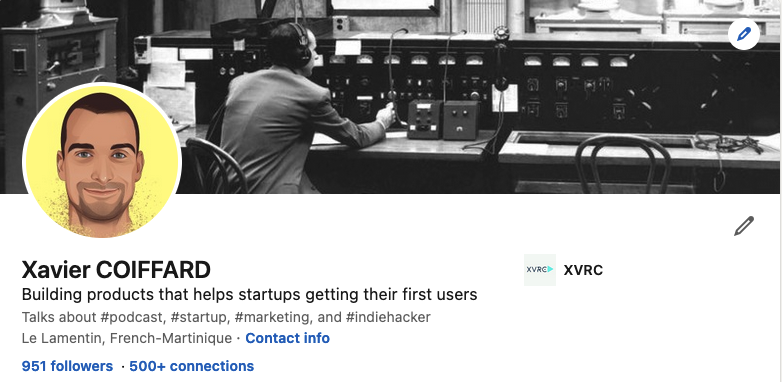
The Featured section
This section is where you’ll put your call to action. If you want people to buy something from you or to signup for a website, you should put it in that section. Use a nice picture of your service/product with a short description and a link. The featured section takes much room on your profile. You should 100% leverage it!
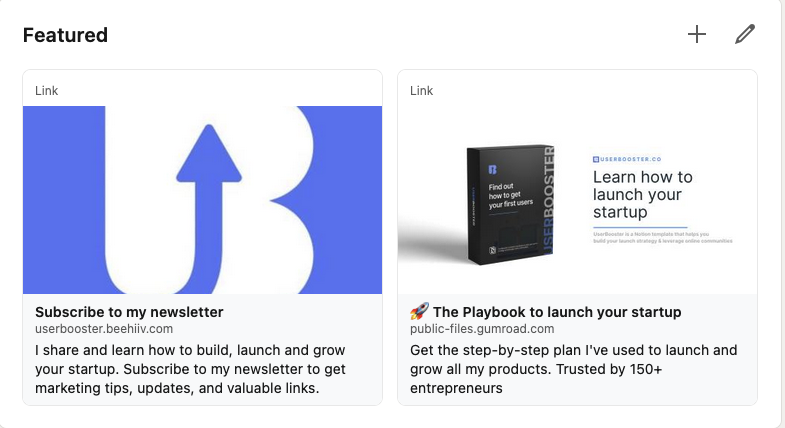
The website
It’s still a beta feature, but some profiles already have access to it.
What and how to post on LinkedIn?
Again, it would be best to treat LinkedIn like you did for Twitter. That’s the same strategy.
- Choose a niche, and stick to it
- Publish quality content every day, at least once a day, on your chosen topic. If you can post several times a day, it’s even better! You can totally “recycle” some of your Twitter content!
- Engage A LOT with other people in that niche. It means commenting on their posts, liking their updates, etc.
You should spend 80% of your time engaging with others and 20% posting updates. People will notice you in the comments, check your profile, and follow you. So, the more you comment, the more you’ll be seen!
LinkedIn posts are slightly different from Twitter, though the format isn’t the same.
A LinkedIn post is divided into three parts.
The hook:
The mission of the hook is to stop people from scrolling. You have only two sentences to make them want to click on that “See more…” link. Make it personal and intriguing. Tease the content!
The content
Once the reader is hooked, you have his attention. You can share long-form content here. Add value as much as you can, and make short sentences.
The CTA
This last step is essential. You can ask people to share your post or comment on it. I recommend asking a question at the end of the post. People will eventually answer it, increasing your post’s visibility. You could even promote your startup if you want to!
Note: Don’t put any links directly in your post. LinkedIn penalized the posts with a link inside. The best practice here is to put your link in the first comment and use your CTA to ask your readers to check the link in the comments. You’ll get much less visibility.
A few examples of good LinkedIn posts:
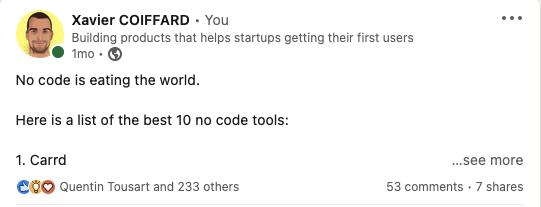
I started with a statement about a trendy topic, and then I teased the list with only the first element. People want to click to see more, and as they found value in the list, they liked and shared the post!
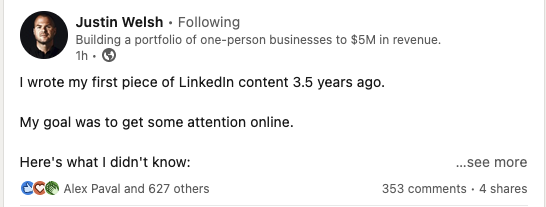
With this post, Justin started with a personal point of view. Telling your story is an excellent way to generate engagement. And, he’s building credibility simultaneously with the “3.5 years ago”.
Then, he’s teasing the recipe with his last sentence in the hook. He triggers attention. People will click on the “See more…” for sure!
PS: Notice how many comments, likes, and shares each post has. If you want virality, you need to make people like and comment on your posts!
LinkedIn Groups
LinkedIn also comes with groups. I recommend you to join a few groups in your niche (the most active ones). Each time you post a new update, LinkedIn will ask you if you want to cross-post it in a group. I did it several times, and it brought me some traction. You should definitely try it!
Conclusion
In the end, the main takeaway for all startups should be that LinkedIn is a great platform. It can be highly effective if you know how to use it. With a bit of experimentation, your startup will have access to a vast audience that is generally more interested in what you have to say and offer than your average business or consumer on other networks.
It won’t always be easy, but there’s no denying that Linkedin is still a viable marketing platform for many startups and small businesses.

